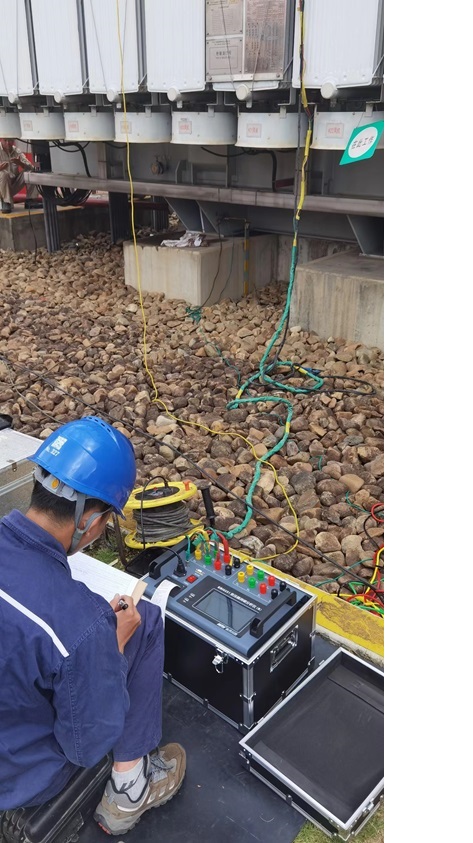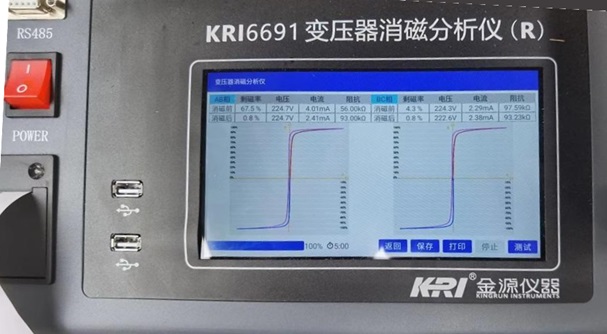Causes of Residual Magnetism in Transformers and Demagnetization Methods
Causes of Residual Magnetism in Transformers:
Residual Magnetism Caused by DC Resistance Testing and Other Operations
-
Due to the hysteresis characteristics of ferromagnetic materials, residual magnetism remains in the core after performing operations such as voltage ratio measurement and DC resistance testing on the transformer.
-
Conversion of Steady-State Magnetic Flux into Residual Magnetism When Power is Cut Off
During transformer operation, steady-state magnetic flux is generated inside the core. When the transformer is de-energized, due to the conservation of magnetic flux in the circuit, the steady-state flux does not immediately disappear. Instead, it retains a residual magnetism with the same magnitude and polarity as the steady-state flux at the last moment before power-off.
 Importance of Transformer Demagnetization
Importance of Transformer Demagnetization
-
Protecting Equipment Safety
-
Preventing Relay Protection Malfunctions: Residual magnetism may cause partial saturation of the transformer core when energized, leading to excessive harmonics in the excitation current and resulting in inrush current. This can cause transformer protection devices to malfunction, preventing the successful energization of the transformer and potentially leading to large-scale power outages.
-
Avoiding Equipment Damage: The high current generated by inrush currents can cause excessive electromagnetic force, potentially damaging the transformer and circuit breakers. This reduces the lifespan of electrical equipment. Additionally, residual magnetism may induce operational overvoltage, further damaging electrical equipment.
-
Improving Measurement Accuracy
-
Ensuring Accurate Measurements: Residual magnetism can affect subsequent transformer tests, leading to inaccurate results. For instance, after DC resistance measurement, if demagnetization is not performed, the residual magnetism may cause cumulative effects in future tests, leading to measurement deviations that do not accurately reflect the transformer’s actual condition.
-
Ensuring Current Transformer Accuracy: The DC component of residual magnetism may cause excessive magnetization in the current transformer’s magnetic circuit, significantly reducing measurement accuracy and impairing the correct operation of relay protection devices. Demagnetization helps prevent such issues.
-
Ensuring Stable Grid Operation
-
Reducing Harmonic Pollution: The excessive harmonics generated by residual magnetism can severely degrade power quality and interfere with other electrical equipment. Demagnetization helps reduce harmonic content, ensuring better power quality.
-
Preventing Coupled Inrush Currents: Residual magnetism in one transformer may induce coupled inrush currents in transformers at adjacent substations, potentially leading to widespread power outages. Demagnetization reduces this risk.
-
Reducing Energy Consumption and Maintenance Costs
-
Minimizing Reactive Power Losses: Residual magnetism can cause partial saturation of the transformer core, increasing reactive power consumption. Demagnetization improves transformer efficiency and reduces reactive power losses.
-
Extending Transformer Lifespan: Demagnetization prevents issues such as core saturation and overheating caused by residual magnetism, thereby reducing insulation degradation and prolonging the transformer's operational lifespan. This also lowers maintenance costs.

Kingrun Transformer Instrument Co.,Ltd.


More Transformer Testers from Kingrun


 Importance of Transformer Demagnetization
Importance of Transformer Demagnetization



